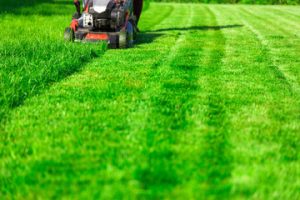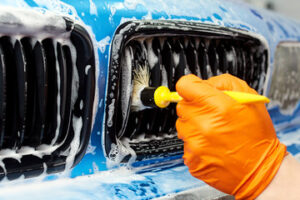Lawn care is evolving into a blend of science, creativity, and environmental awareness. The focus is shifting from basic mowing and watering to strategies that enhance soil health and long-term sustainability. People now see lawns not only as aesthetic features but also as living ecosystems. This change is driving the rise of advanced methods that balance beauty with ecological responsibility.

Modern lawn care techniques are integrating precision soil monitoring to determine exact nutrient needs. Instead of applying fertilizers on a fixed schedule, tailored feeding is becoming the new standard. This approach reduces waste, improves grass resilience, and supports micro-organisms in the soil. As a result, lawns maintain vibrancy while reducing their environmental impact. Visit Here to learn more.
Sustainable irrigation systems are transforming the way lawns are maintained. Smart sensors now adjust watering cycles based on weather conditions and soil moisture levels. This prevents overwatering, conserves resources, and helps grass develop deeper root systems. The outcome is a lawn that thrives even in variable climates without excess water usage.
Natural pest control solutions are gaining popularity as concerns about chemical use increase. Introducing beneficial insects and using bio-based repellents are replacing harsh synthetic treatments. These methods not only protect grass but also support pollinators and other beneficial species. This shift promotes a healthier ecosystem both above and below the soil.
Grass varieties are also adapting to new environmental realities. Breeding programs now focus on developing resilient turf that can withstand drought, shade, or heavy foot traffic. Some even require less mowing and fertilizer, reducing maintenance demands. This allows homeowners to enjoy lush lawns with less time, cost, and environmental stress.
The role of aeration is being refined with innovative tools that go beyond traditional core aerators. New equipment uses micro-tines or air injection to reduce soil compaction without damaging grass. This ensures better air, water, and nutrient movement into the roots. Over time, these techniques result in stronger, more resilient lawns.
Organic lawn feeding is moving toward custom compost blends designed for specific soil conditions. These blends combine nutrient-rich organic matter with beneficial microbes to boost root health. Unlike synthetic fertilizers, they release nutrients slowly and improve soil texture. This creates a self-sustaining lawn system that grows healthier with each season.
Seasonal lawn care strategies are also changing to match climate variability. Instead of rigid seasonal schedules, adaptive care plans consider shifting weather patterns. This includes timing seed planting, aeration, and pest management based on real-time conditions. Such flexibility helps lawns avoid stress and maintain consistent growth.
The concept of biodiversity-friendly lawns is becoming a trend among forward-thinking homeowners. Instead of pure grass monocultures, lawns are incorporating low-growing flowering plants. These additions attract pollinators, improve soil health, and reduce mowing frequency. This creates a vibrant and functional green space that benefits both people and nature.
Electric-powered lawn care equipment is becoming a cleaner alternative to gas-powered tools. Advances in battery life and performance now make electric mowers, trimmers, and blowers highly efficient. They reduce emissions, noise pollution, and operating costs while delivering consistent results. This technology is reshaping maintenance routines for a quieter and greener future.
Lawn health analytics are entering the mainstream through mobile applications and connected devices. These tools track growth patterns, soil data, and nutrient levels in real time. The insights allow for fine-tuned maintenance decisions without guesswork. This data-driven approach transforms lawn care from reactive to proactive.
Regenerative lawn practices are gaining attention for their ability to restore degraded soil. These techniques focus on increasing organic matter, reducing chemical inputs, and promoting deep rooting. Over time, regenerative care can make lawns more drought-tolerant and self-sustaining. The result is a greener space that thrives without constant intervention.
Artificial intelligence is emerging as a surprising player in lawn care planning. AI-driven recommendations analyze soil conditions, plant health, and local weather to create personalized care plans. These plans adapt automatically when conditions change. This ensures optimal growth while reducing unnecessary work and resource use.
Microclover integration is becoming a favored choice for reducing lawn maintenance. When mixed with traditional grass, microclover adds nitrogen naturally and stays green in dry conditions. It also reduces weed competition without the need for herbicides. This blend creates a low-maintenance, eco-friendly alternative to standard turf.
Vertical lawn designs are introducing a new dimension to green spaces. Living walls and tiered turf structures can bring lawn benefits to smaller areas. These designs also improve air quality, regulate temperature, and provide visual appeal. The concept expands the definition of what a lawn can be.
Lawn edging is moving toward sustainable and creative materials. Reclaimed wood, recycled stone, and plant-based composites are replacing plastic and concrete. These choices add character while minimizing environmental impact. Well-designed edging also improves maintenance efficiency by keeping grass neatly contained.
Seed technology is advancing with coatings that protect against pests, diseases, and harsh conditions. Some seed blends are engineered to germinate faster and grow more evenly. This innovation reduces the risk of patchy areas and speeds up lawn establishment. It also allows for successful planting in challenging environments.
Green waste recycling is being incorporated into lawn care routines for a closed-loop system. Grass clippings and fallen leaves are repurposed into compost or mulch on-site. This process returns nutrients to the soil and reduces the need for external inputs. It also minimizes landfill waste while enriching lawn ecosystems.
Lawn lighting design is evolving to enhance aesthetics and safety without excess energy use. Low-voltage and solar-powered options are making outdoor spaces more inviting. Strategic lighting placement can also showcase unique landscaping features at night. This addition transforms lawns into functional 24-hour spaces.
Education in lawn stewardship is becoming an essential part of the movement toward greener practices. Workshops, digital courses, and community programs are teaching proper care techniques. This knowledge empowers people to maintain lawns that are both beautiful and ecologically balanced. The ripple effect is healthier neighborhoods and improved environmental outcomes.
The future of lawn care blends advanced technology, ecological awareness, and practical maintenance. By integrating these innovations, homeowners can create lawns that are both stunning and sustainable. The shift from traditional methods to adaptive, green practices benefits more than just the property. It fosters healthier ecosystems, saves resources, and ensures that green spaces continue to flourish in a changing world.


